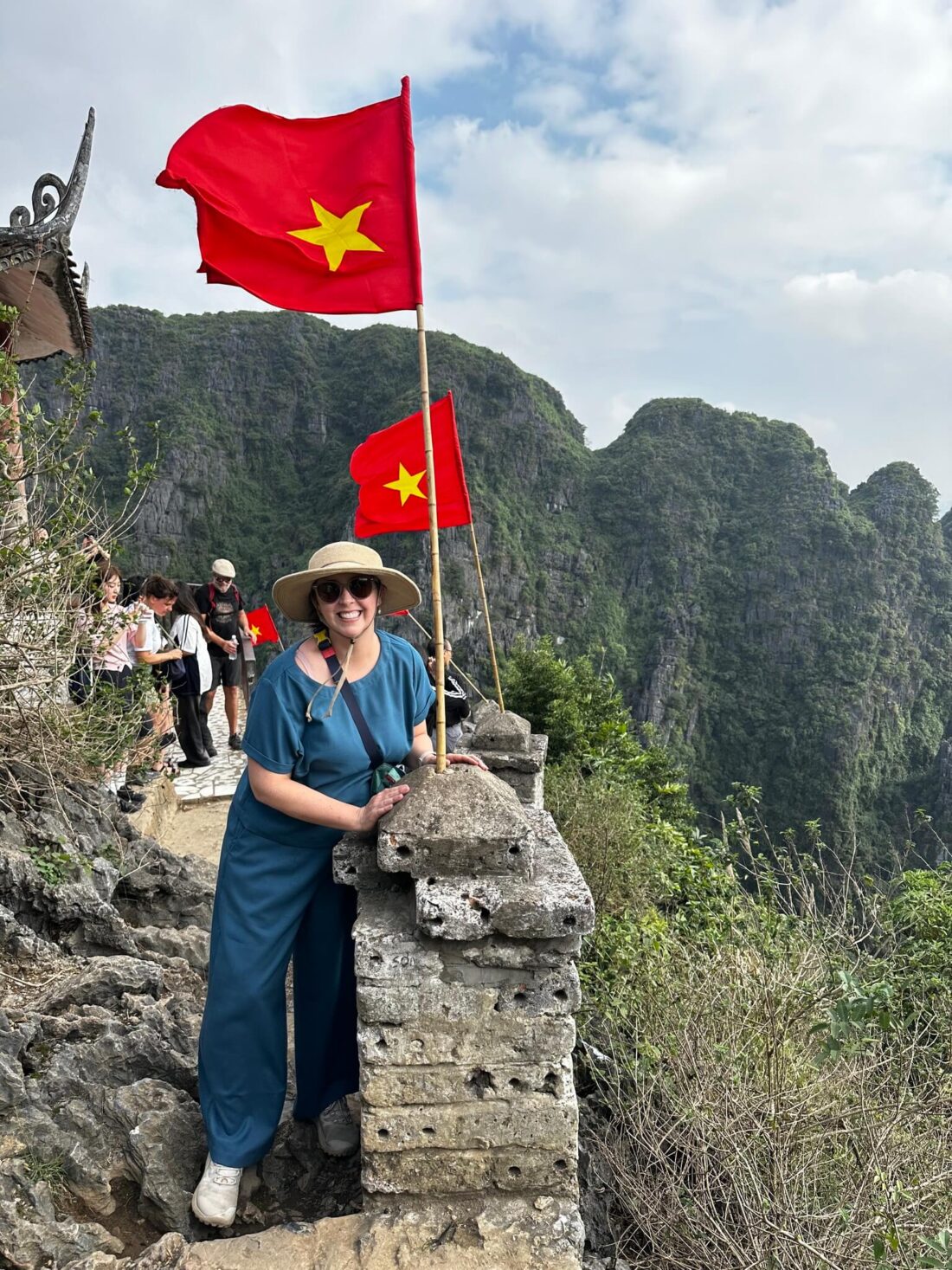If you’re planning to travel Vietnam, there are a few things you need to be aware of. As a first time visitor it can be stressful not to know what to expect. There were a few things I wish I’d known before I went. So if you’re going to Vietnam, check out my top Vietnam travel tips to help you prepare!
1. Get Your Visa in Advance
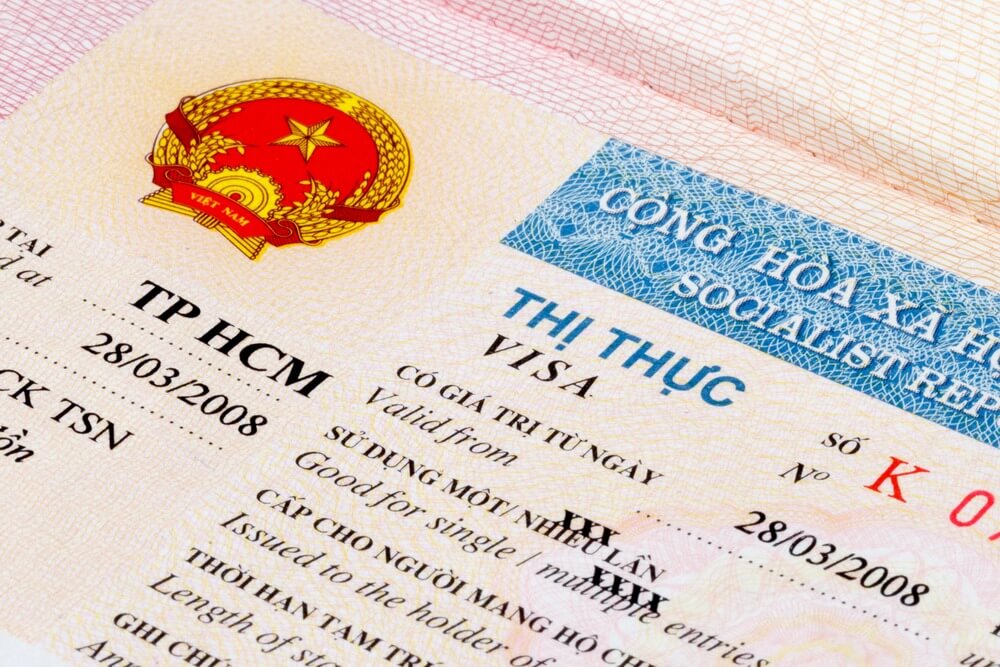
If you’re visiting Vietnam, you’re going to need a visa to enter. Fortunately, it’s fairly simple to get and you can do it before your trip. In fact, airlines won’t even let you fly to Vietnam if you don’t have your visa ready. One person in our group had the wrong date (1 day later) on her visa and had to stay in the airport and buy a new flight. So make sure you get dates and airports right when you apply.
Also, be sure your application name matches your passport. I forgot to enter my middle name on my visa and had to redo it after it got rejected for not matching my passport.
You can apply for the Vietnam e visa here.
It looks a little sketchy, but I promised it worked. The cost of the Vietnam visa is $25 for single entry. After your application is approved, your visa will be emailed to you.
When you arrive at the airport in Vietnam, there will be a line to show your passport and visa. You can save it on your phone or print it out. I did both, just to be safe, but showed them my paper visa.
2. Go at the right time
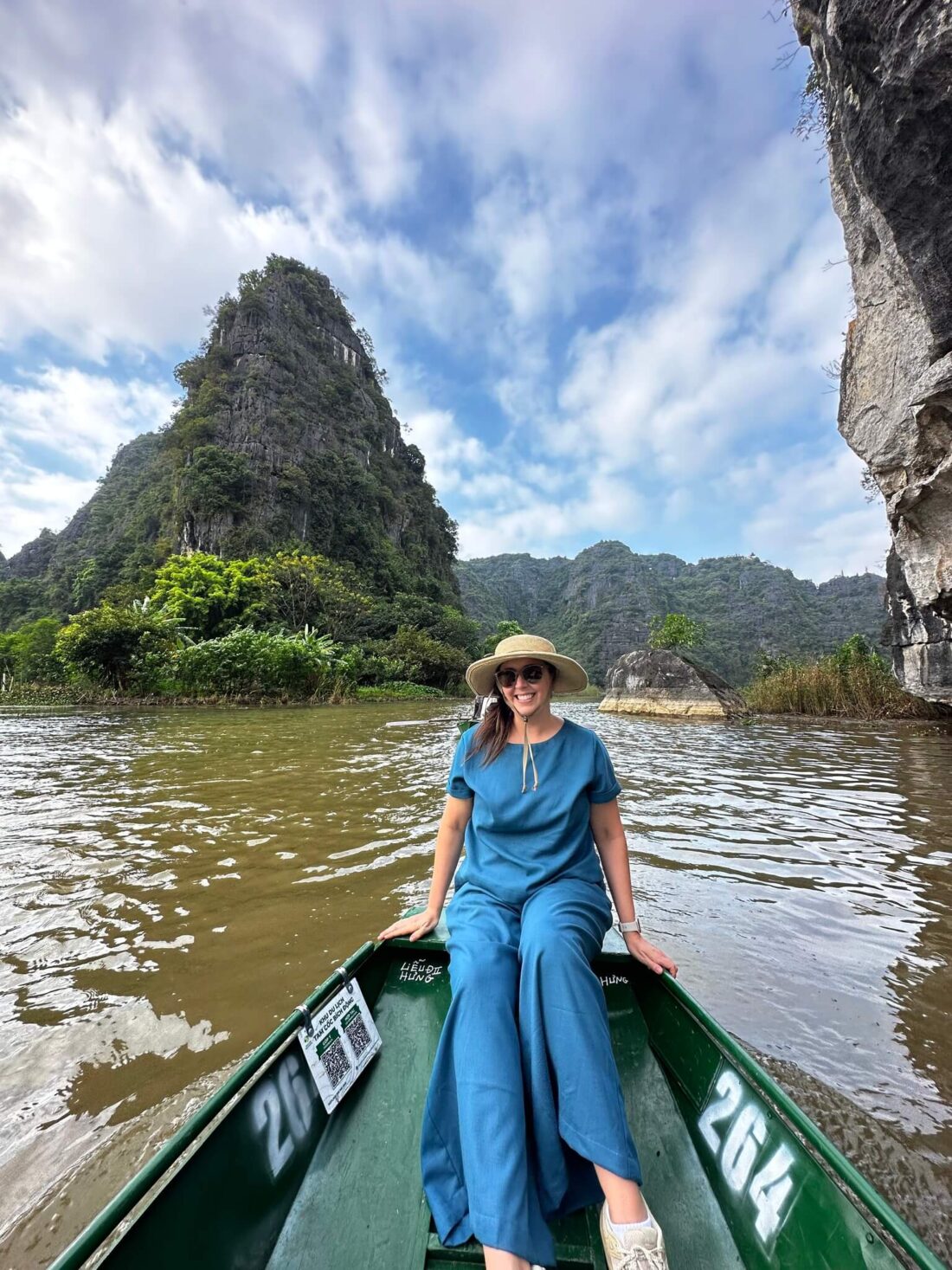
Ok, there’s no wrong time to to Vietnam, but you might want to go at the time that’s right for you! I went to Vietnam in January and February and our weather was fantastic. Hot in Hoi An, warm in Hanoi, and warm in Halong Bay, but chilly at night. We were also there during Tet (Lunar New Year), Vietnam’s most important celebration, so it was incredible to see all the decorations and preparation for the New Year! Here are some weather guidelines for each area of Vietnam.
North Vietnam (Hanoi, Ha Long Bay, Sapa)
- Best Time to visit Northern Vietnam: September to November (Autumn) and March to April (Spring)
- Why?: The weather is pleasant with moderate temperatures and less rain, making it ideal for exploring the bustling streets of Hanoi, cruising through Ha Long Bay, or trekking in Sapa.
Central Vietnam (Hue, Da Nang, Hoi An)
- Best Time to visit Central Vietnam: January to August
- Why?: Central Vietnam has warm weather during these months, perfect for visiting the ancient town of Hoi An, the beaches of Da Nang, or the historical sites in Hue. The rainy season starts in September and can bring heavy downpours and occasional typhoons, especially in October and November.
South Vietnam (Ho Chi Minh City, Mekong Delta)
- Best Time to Visit South Vietnam: December to April (Dry season)
- Why?: The weather is warm and dry, ideal for exploring the vibrant life in Ho Chi Minh City or venturing into the Mekong Delta. The rainy season from May to November can see short, heavy showers, but travel is still possible during these months.
3. Visit More than One City
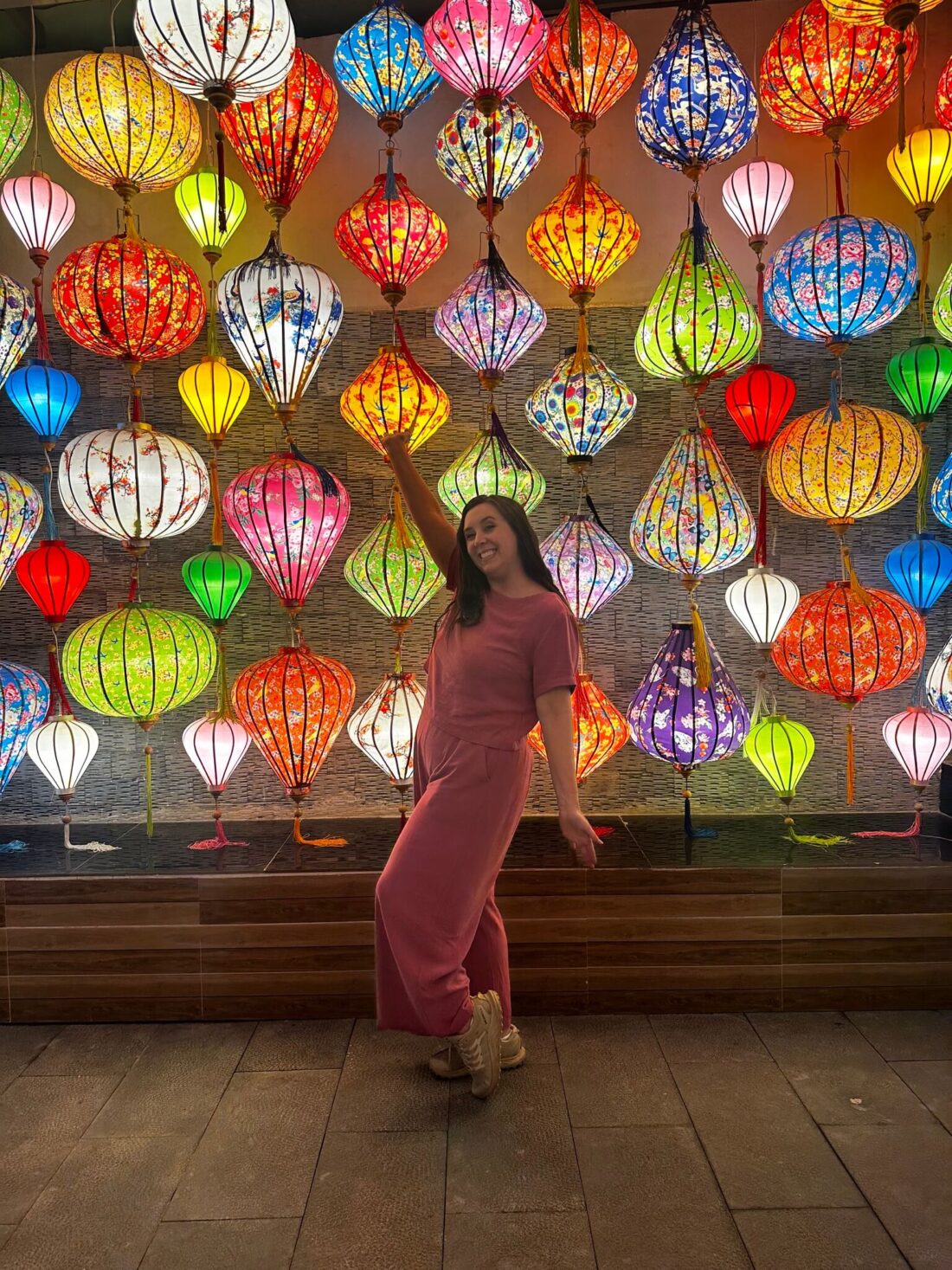
Vietnam is probably a lot bigger than you realize. And it’s very long, so destinations are quite spread out. Many people make the mistake of only visiting one large city in Vietnam and not doing any day trips or visiting another area of Vietnam. It is very affordable to get around Vietnam and you can get a cheap flight within the country, so it’s worth seeing more than one destination in the country.
major cities
4. Download the Grabb App
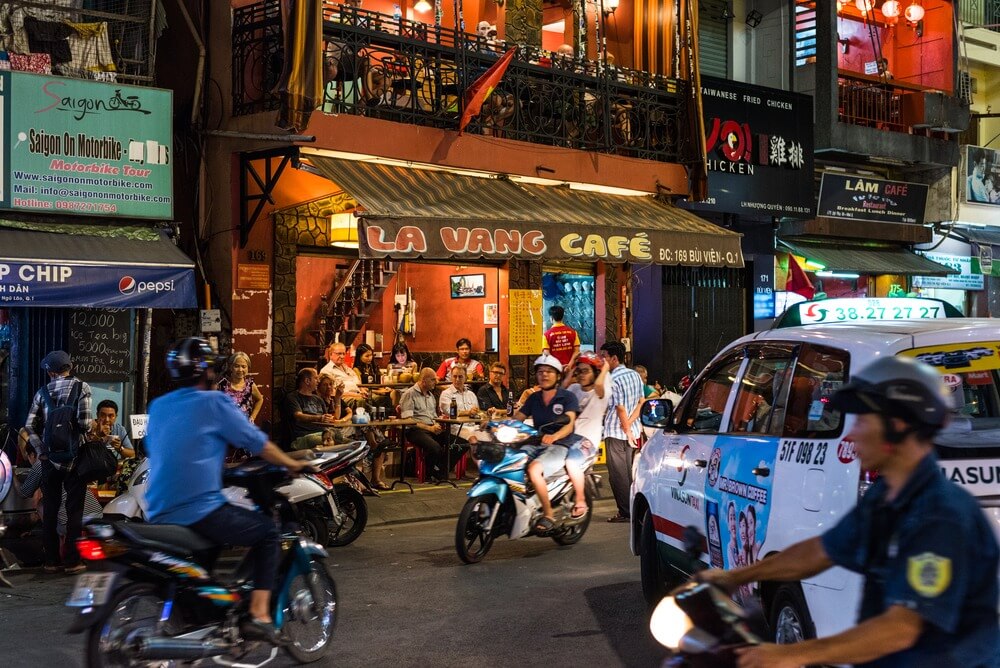
If you plan to get around by car in Vietnam, you should download the Grabb App. It’s like UBER or Lyft for Asia and it works really well. I used it all over Vietnam and Thailand without any issue. If you’re not in the mood to barter with taxi drivers or don’t have a lot of cash, this is a good way to go. It felt safer and easier to do this.
5. Pack Layers
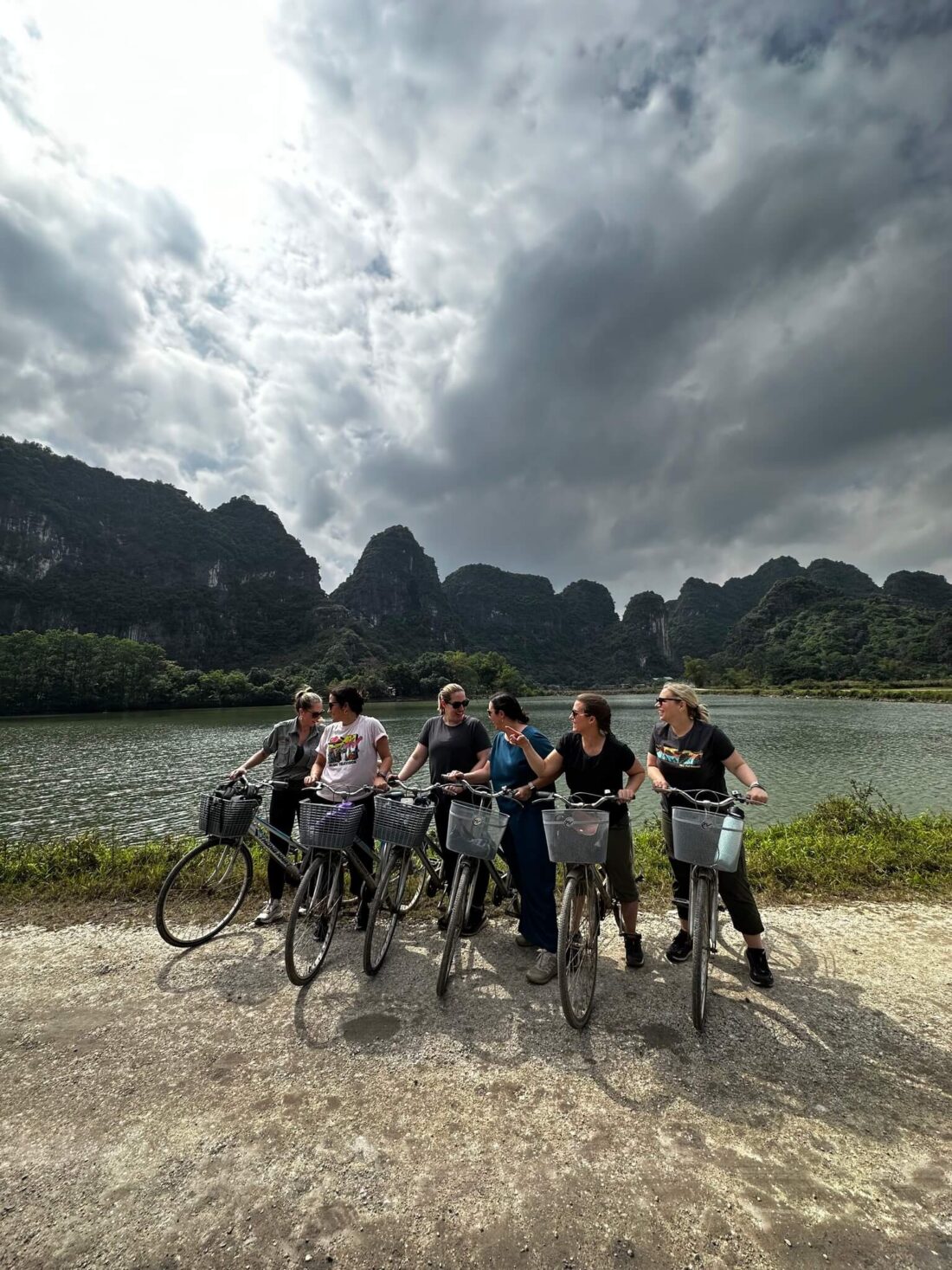
The weather in Vietnam is really varied. When you look at a map you can see why…it’s a very LONG country at over 1,000 miles long! So the weather in Northern vietnam and Southern Vietnam can be very different. We spent a few days in Hoi An, a few days in Hanoi, and a few days in Halong Bay, and the weather on the Bay was much cooler than the rest of our trip.
I packed sun dresses, pants, and jackets and I was glad to have them all! Just be sure to check the weather of each destination in Vietnam. Trips are always better when you have the right clothes!
6. Bring an Extra Bag for Souvenirs
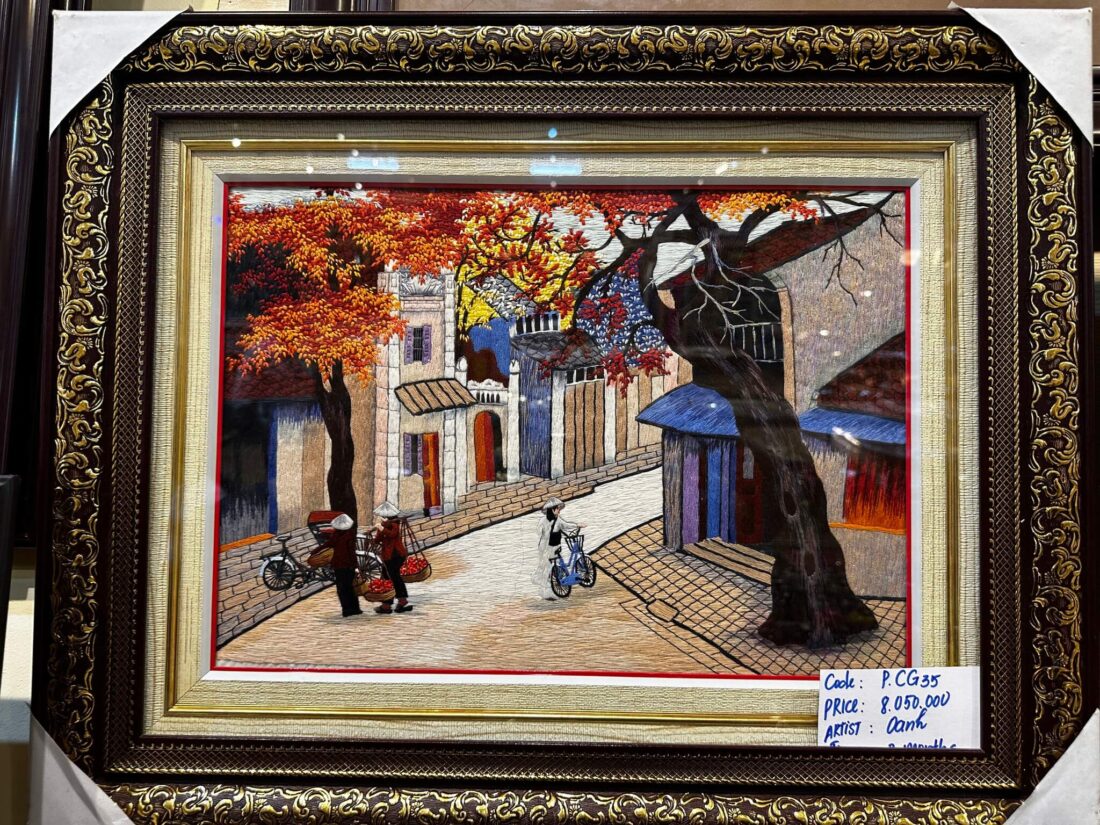
I’m not normally a huge shopper when I travel, but there were some great things I wanted to bring home in Vietnam. Luckily I had this great packable duffel that has been with me on many trips! It is HUGE and holds so much and is super sturdy!
Some things that I purchased in Vietnam:
- Lanterns – So many lanterns! One that I made in this class, and a bunch more that I purchased from a local shop.
- Silk Paintings – Probably my most favorite souvenir from Vietnam was the silk painting I purchased from a man disabled from the effects of Agent Orange, a chemical used to clear vegetation during the Vietnam War. Vietnam is famous for its silk paintings, which are embroidered on fabric and absolutely beautiful! They come in all sizes and different levels of detail made by local people. They can be anywhere from $5 USD to $500 USD depending on where you buy yours, how detailed it is, and how long it took to create. They are stunning though!
- Custom Clothing – Hoi An in particular is famous for its custom clothing tailors. You can get just about anything sewn to your liking while you’re there. Some tailors specialize in suits and some specialize in formal ware. Check reviews on Google before picking your tailor. We chose Rosa Tailor, mostly because she was across the street from our hotel and had a 5-star review on Google! I had two custom linen sets and two custom skirts made in just a few hours. It was so much fun to experience it and I love my clothes!
7. Have Cash on Hand
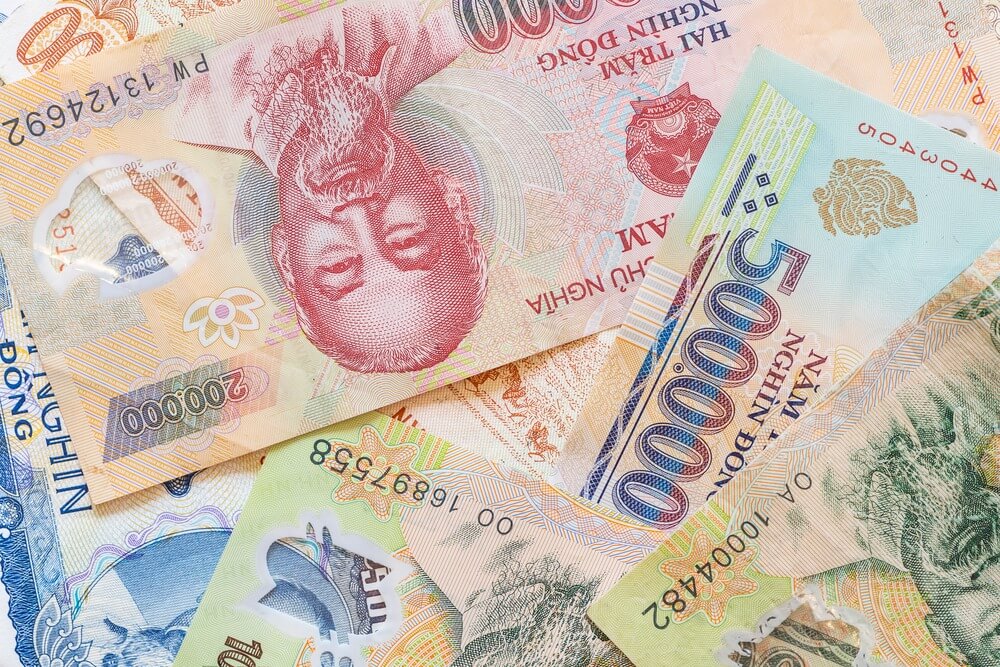
When traveling Vietnam, be sure to get cash out when you get to Vietnam or bring Vietnamese Dong from your bank with you. We needed a lot of cash in Vietnam. A few places took cards, but mostly it was cash only, especially in the local markets and for street food. I think I took about $300 Vietnam Dong out at the ATM and that lasted me about a week.
8. Drink Safe Water and Eat Safe Food
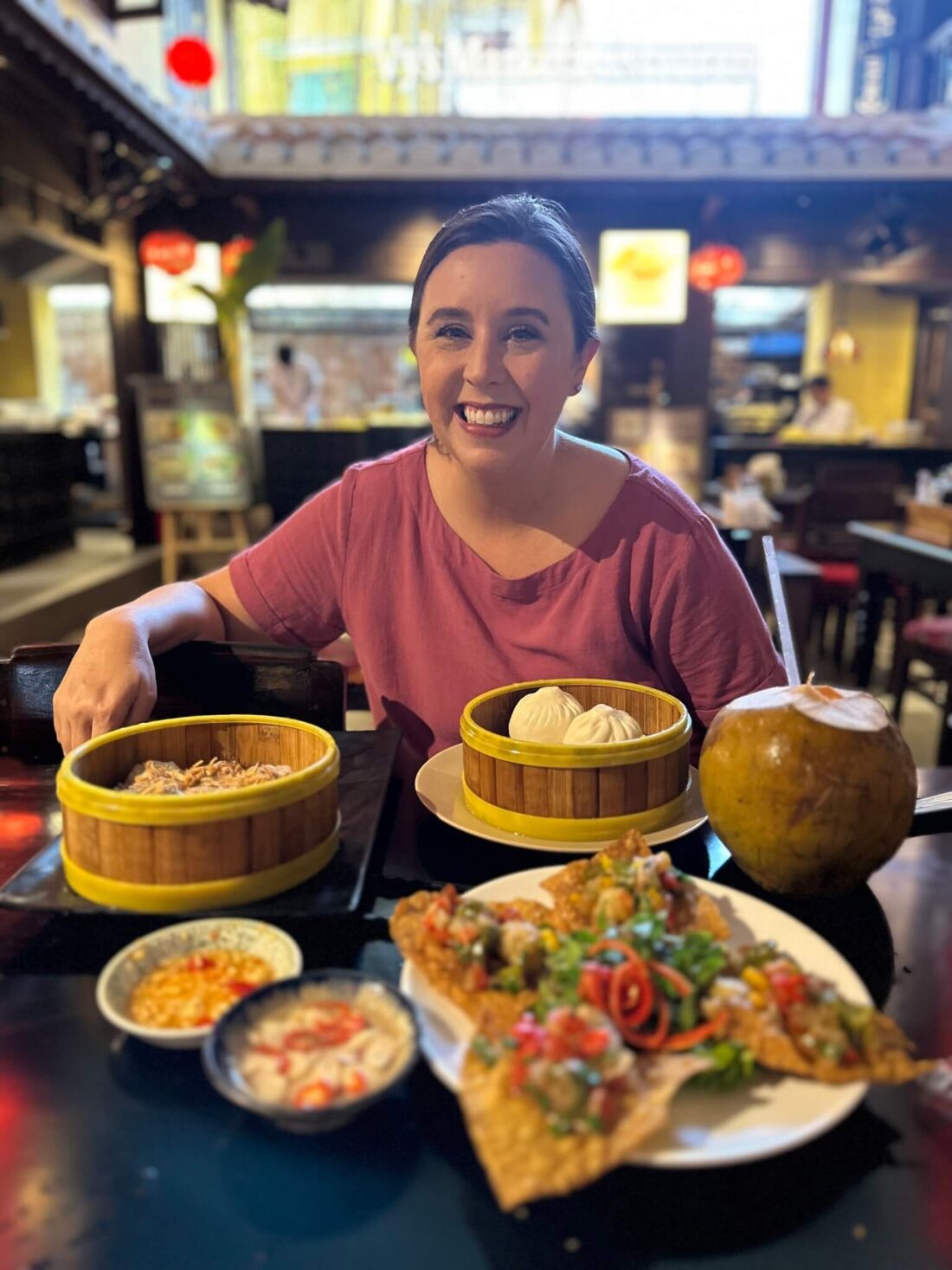
Food and water safety are always a concern of mine when traveling. And while I want to try all of the delicious food at the street food stalls and experience the local culture through food, I also don’t want to be sick for the rest of my trip (been there, done that)!
Try not to eat any raw vegetables fruit with a skin that could have been washed in contaminated water. Examples are lettuce, raw carrots, apples, etc. Peeled fruit and cooked vegetables are usually safe.
A good way to experience Vietnamese food is to take a cooking class from a reputable company where you have control over how the food is prepared and the water being used. Most classes will cater to a western audience and understand water concerns. Here is a list of good cooking classes.
- Hoi An Cooking Classhttps://www.getyourguide.com/hoi-an-l831/hoi-an-tra-que-herb-village-cooking-class-t518142/?partner_id=67O18VU&utm_medium=online_publisher&cmp=VietnamTips
- Hanoi Cooking Class https://www.getyourguide.com/hanoi-l205/hanoi-traditional-cooking-class-learning-5-famous-dishes-t563666/?partner_id=67O18VU&utm_medium=online_publisher&cmp=VietnamTips
- Ho Chi Minh Cooking Class https://www.getyourguide.com/ho-chi-minh-city-l272/4-course-hands-on-vietnamese-cooking-lesson-in-small-group-t125720/?partner_id=67O18VU&utm_medium=online_publisher&cmp=VietnamTips
Another concern is water. This is probably one of the most important Vietnam travel tips. Don’t drink the tap water! Water can be tricky in Vietnam. You should avoid drinking tap water. Either only use sealed drinking water or bring a good filter water bottle. This is the one I use.
Despite all your best efforts, you may still get sick. I recommend asking your doctor for any meds that might help with bacterial sickness in case you do get sick. I take prescribed antibiotics with me whenever I travel, but my doctor travels to India frequently and gets it! Another option is to see a travel nurse, although any time I go they seem to go overboard and end up scaring me with all the possibilities of my inevitable death!
I also highly recommend getting travel insurance for your trip, because you never know!
9. Be Prepared for Some Hard History
Americans visiting Vietnam should be aware of the country’s complex and difficult history.
When traveling to Vietnam, be prepared to face some hard history. Visiting Vietnam as an American can be a deeply moving and eye-opening experience, given the country’s complex past, particularly concerning the Vietnam War (known in Vietnam as the American War or the Vietnam American War). This period from the late 1950s to 1975 left indelible marks on both nations, shaping their histories, cultures, and peoples in profound ways.
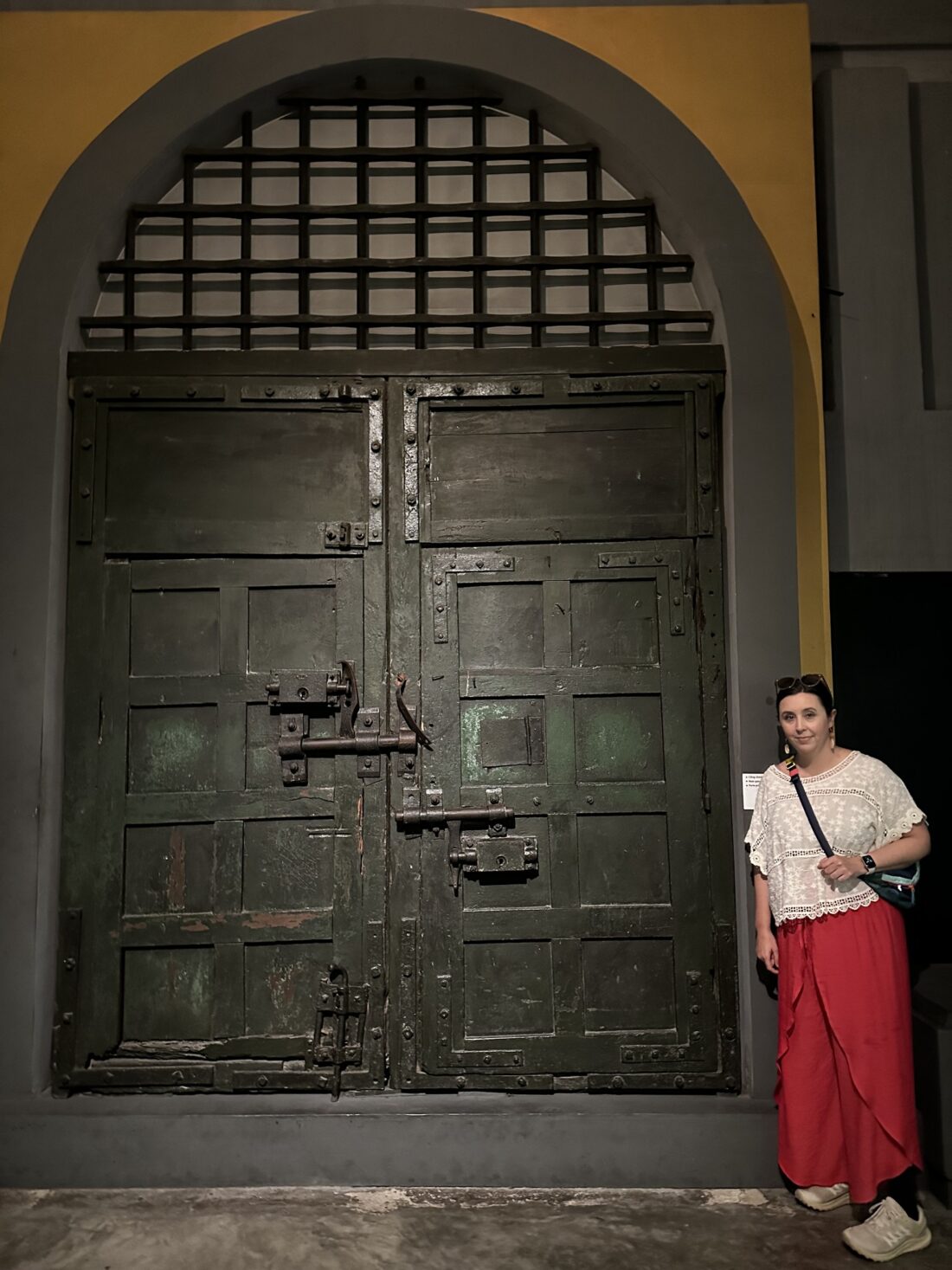
The hardest part for me was seeing victims of Agent Orange, which was a chemical used during the war to clear the jungle vegetation. This chemical affected the genetics of people living in Vietnam, and in turn their children who wouldn’t be born for years to come. I think we will see these lasting effects for a while. It was hard to see this, knowing that my country was part of the cause, but they were all very friendly and welcoming to us as Americans.
10. Book Activities Before You Go
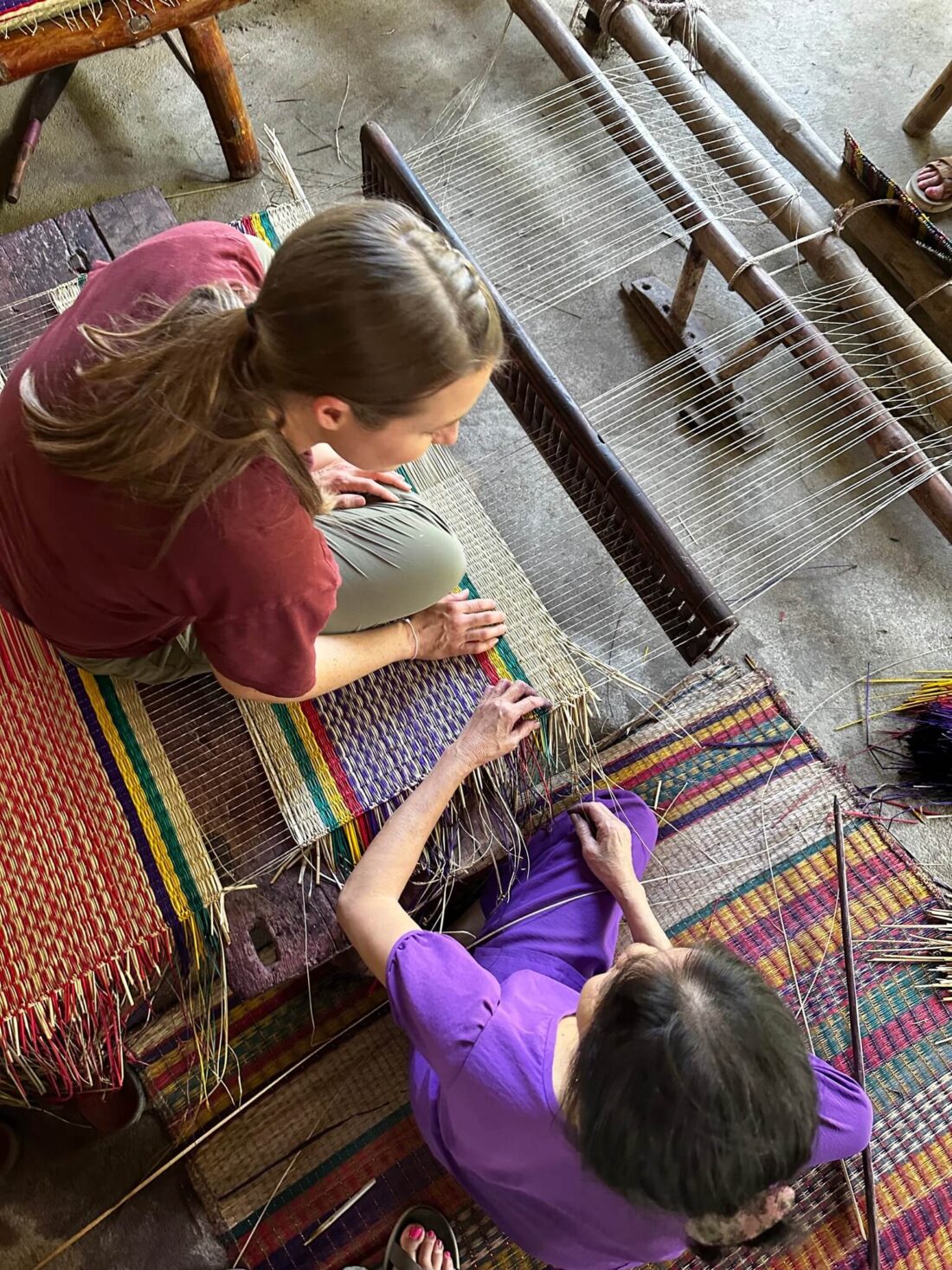
My last Vietnam travel tip is to book ahead. While some people can visit Vietnam and wing their activities, I like to have things planned and scheduled, I like to arrange trips to nearby places, and some tours do book up during busier times, so I think it’s a good idea to have at least a few things planned and booked ahead of time, especially for your first time visit to Vietnam. Here are some of the activities I recommend planning ahead for to avoid unnecessary stress:
Frequently Asked Questions
1. Can Americans Visit Vietnam?
Of course! Americans are welcome in Vietnam with a visa. There are some hard things to see from the war, but its part of both of our histories. I found everyone to be friendly and welcoming towards us as Americans.
2. Do I need a visa to visit Vietnam?
Yes, you need to apply for an e-visa before visiting Vietnam. I suggest applying at least 2 weeks before. Be sure to put your correct name, entry date, and port of entry on your application.
3. Can I use US dollars in Vietnam?
While some hotels, restaurants, and shops in tourist areas might accept US dollars, it’s more common to use Vietnamese Dong (VND) for everyday transactions. It’s advisable to carry local currency, especially when traveling outside major cities or shopping at local markets.
4. What is the etiquette for visiting temples and religious sites?
Dress modestly (covering shoulders and knees) and remove your shoes before entering temples or pagodas. It’s also respectful to avoid loud voices and keep a serene demeanor.
I hope these Vietnam travel tips have been helpful for you. Don’t stress too much about the differences. Vietnam is a beautiful and very welcoming country and you’re going to have the best time!

